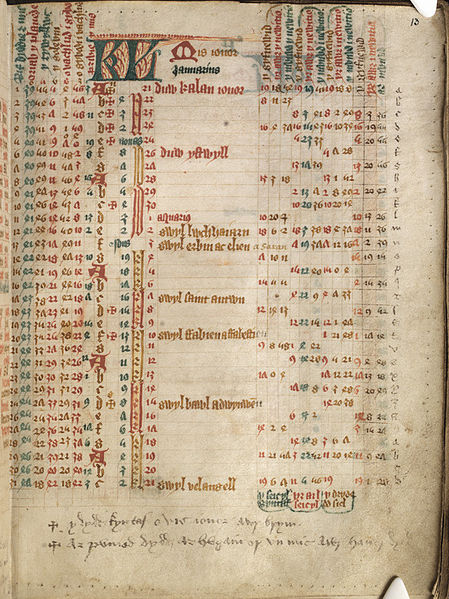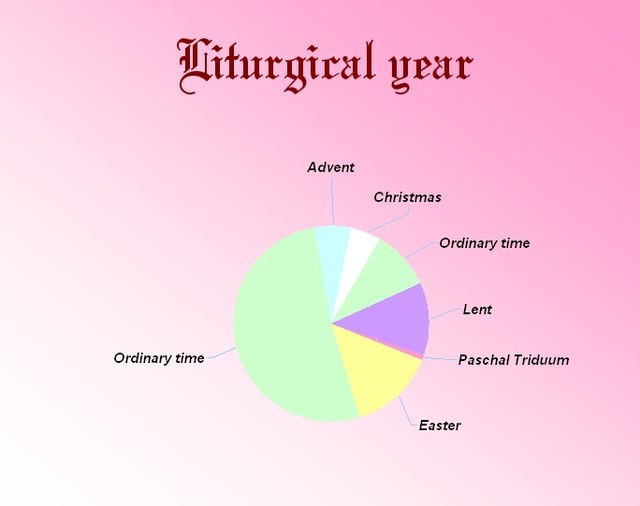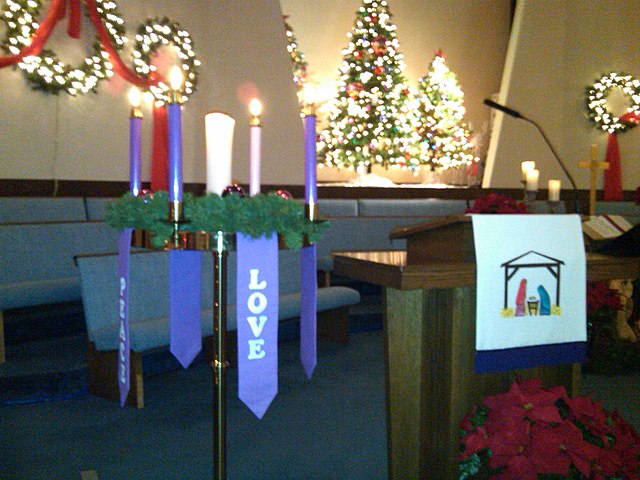The calendar of saints is the traditional Christian method of organizing a liturgical year by associating each day with one or more saints and referring to the day as the feast day or feast of said saint. The word "feast" in this context does not mean "a large meal, typically a celebratory one", but instead "an annual religious celebration, a day dedicated to a particular saint".
A medieval manuscript fragment of Finnish origin, c. 1340–1360, utilized by the Dominican convent at Turku, showing the liturgical calendar for the month of June
A Welsh calendar of saints' days, c. 1488–1498
Excerpt from the Irish Feastology of Oengus, presenting the entries for 1 and 2 January in the form of quatrains of four six-syllabic lines for each day. In this 16th-century copy (MS G10 at the National Library of Ireland) we find pairs of two six-syllabic lines combined into bold lines, amended by glosses and notes that were added by later authors.
The liturgical year, also called the church year, Christian year or kalendar, consists of the cycle of liturgical days and seasons that determines when feast days, including celebrations of saints, are to be observed, and which portions of scripture are to be read.
The month of October from a liturgical calendar for Abbotsbury Abbey. 13th-century manuscript (British Library, Cotton MS Cleopatra B IX, folio 59r).
Roman Rite liturgical year
A white coloured parament hangs from the pulpit, indicating that the current liturgical season is Christmastide. The fact that the Christ Candle in the centre of the Advent wreath is lit also indicates that Christmas has arrived.






